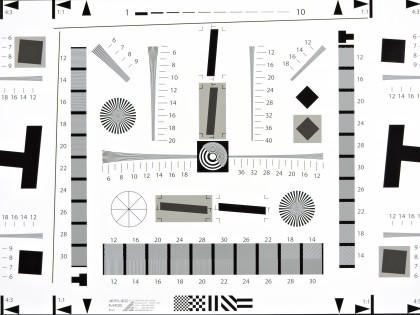Why you can trust TechRadar
We ran the Nikon P900 through our full range of lab tests to check its resolution, dynamic range and noise levels (signal to noise ratio) at different ISO settings.
We then compared its results against those from three main rival cameras and you can see the results in the charts below.
The rivals we chose were the Canon SX60 HS and Sony HX400V – the top of the range bridge cameras from these companies. Neither can match the Nikon's zoom range, but they come close enough that there won't be many situations where you genuinely need the P900's extra reach.
We also added the Panasonic FZ1000 into the mix because this is a very different but equally valid proposition. The Nikon, Canon and Sony use small 1/2.3-inch sensors which allow long zoom ranges but limit the image quality. The FZ1000 offers a shorter zoom range, but has a much larger 1-inch sensor, and the effect on quality is instantly apparent.
Normally we test a camera's JPEG files and its RAW files, but the P900 doesn't offer a raw option, so there is only one chart for each measurement.
Resolution

We use an industry-standard resolution chart to check each camera's resolving power at different ISO settings. Typically, resolution falls as the ISO setting increases – this is normal.

Analysis: The P900 performs slightly better than its other small-sensor rivals, the Canon SX60 HS and Sony HX400V. It's not a large difference, but the resolution available from small sensors is lower than that from larger ones, and even a small advantage is worth having. The Panasonic FZ1000, however, outperforms all of them, especially at higher ISO settings, where its advantage is huge.
Sign up for breaking news, reviews, opinion, top tech deals, and more.
Dynamic range
Dynamic range is the camera's ability to capture a scene with a very high brightness, or contrast range, while still keeping some detail in the shadows and bright highlight areas.

We measure dynamic range (and signal to noise ratio) using DxO Analyzer equipment.
Read: Noise and dynamic range results explained

Analysis: In this test, all four cameras are remarkably close. We would expect the larger sensor of the Panasonic FX1000 to give it an advantage here, but in reality this only become apparent at ISO 3200 and above.
Signal to noise ratio
This is a scientific measurement of the amount of noise generated by the camera at different ISO settings. Noise increases at higher ISO settings. The higher the signal to noise ratio the better, because this means that more of the signal is real image data and less is random digital noise.

Analysis: The larger sensor of the FZ1000 means it produces significantly less noise than the others, but the margin is not that great. The Nikon, Sony and Canon are all very similar – in other words you can expect similar amounts of noise (and noise reduction/image smoothing effects) from each of them as the ISO setting is increased. The sharp improvement in the Sony's figures at ISO 800 could be due to a switch to a much more aggressive noise reduction process.
Overall conclusion
The Nikon P900 performs well against the Canon SX60 HS and Sony HX400V, but the differences are relatively minor – a point put clearly into perspective by the very different results from the Panasonic FZ1000. The P900 is pretty good for a camera of its type, but that type of camera (and that size of sensor) does have its limits.

Amy has been writing about cameras, photography and associated tech since 2009. Amy was once part of the photography testing team for Future Publishing working across TechRadar, Digital Camera, PhotoPlus, N Photo and Photography Week. For her photography, she has won awards and has been exhibited. She often partakes in unusual projects - including one intense year where she used a different camera every single day. Amy is currently the Features Editor at Amateur Photographer magazine, and in her increasingly little spare time works across a number of high-profile publications including Wired, Stuff, Digital Camera World, Expert Reviews, and just a little off-tangent, PetsRadar.
